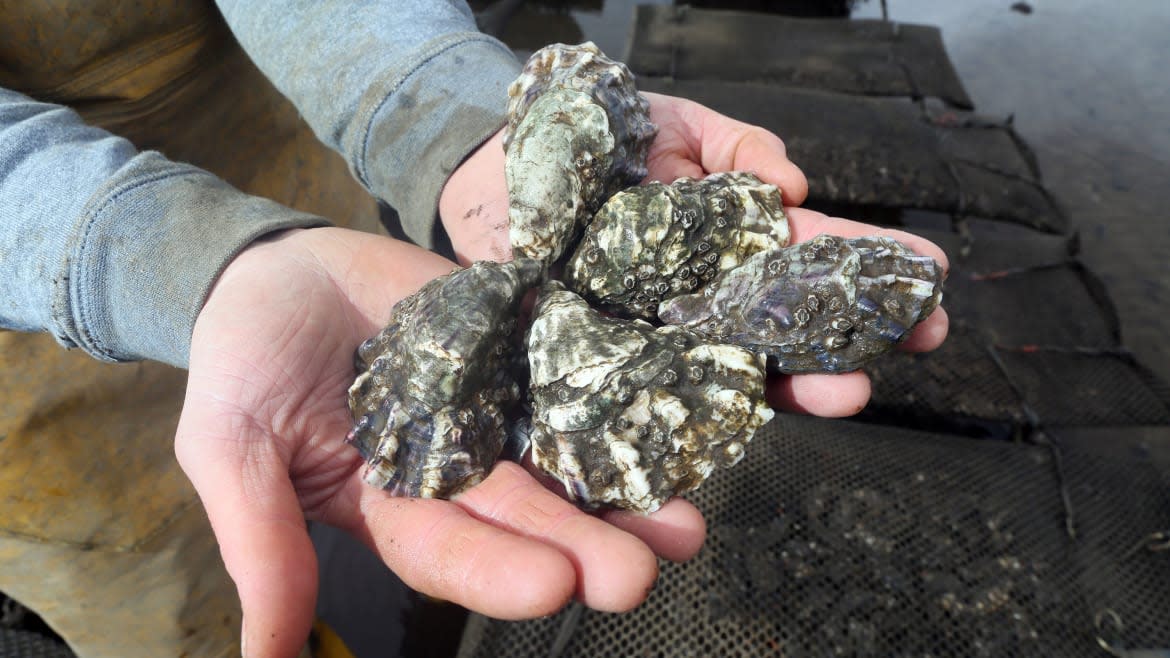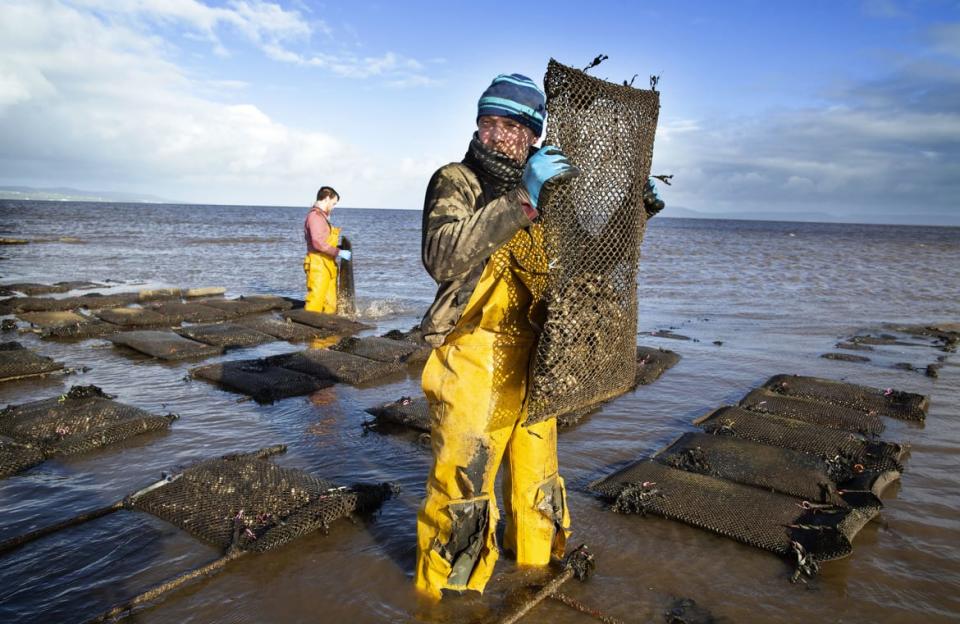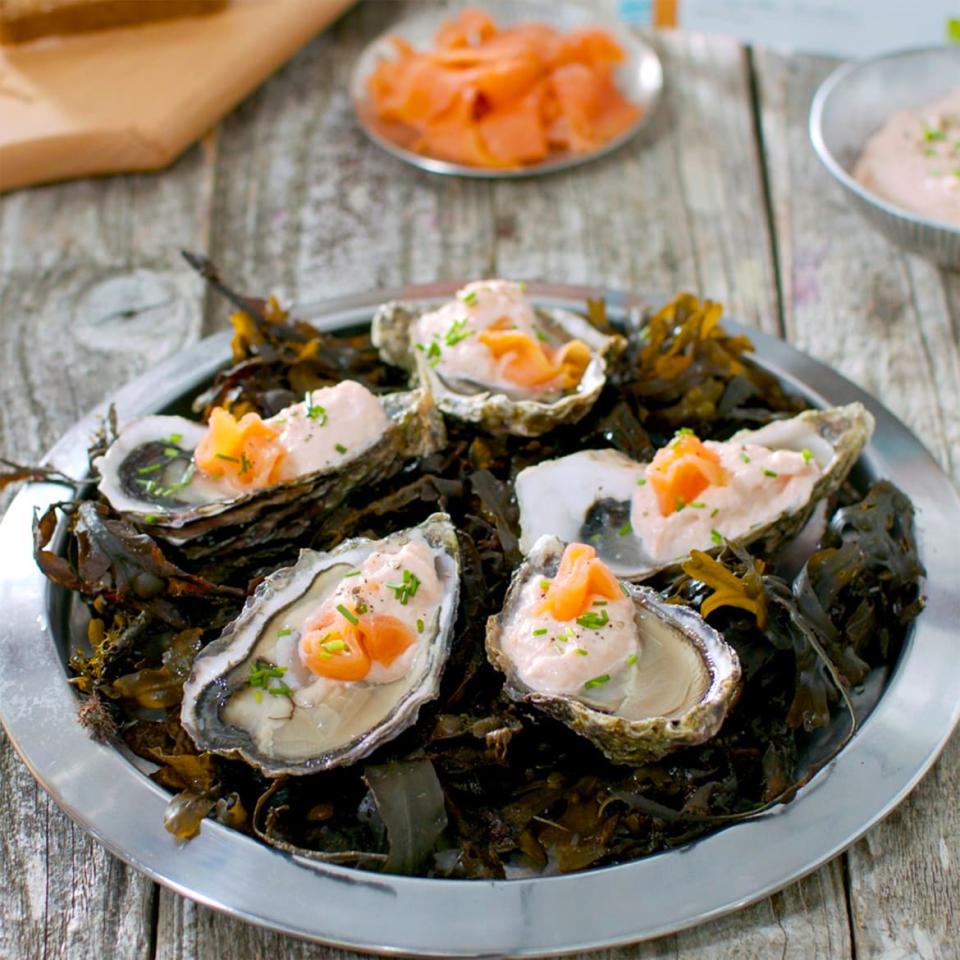This May Be One of Ireland’s Best ‘Liquor’ Trails—Even for Non-Drinkers

I really thought I knew what a fresh oyster tasted like. But then, within splashing distance of the shoreline, an Irishman named David Keane handed me a deep cup of an oyster, just shucked. I had to lean forward to eat it—the cold shell was brimful of liquor, or an oyster’s natural juices. I raised the shell to my lips and tipped it up, sliding the meat into my mouth. An instant rush of the sea, of sweetness. It sounds strange to say, but with the briny bite, I also felt a rush of happiness, bordering on the illicit, as if this taste was so good it must somehow be forbidden.
But no, that’s just the purity of an Irish oyster. And specifically, one from DK Connemara Oysters, a farm outside the village of Letterfrack in County Galway, on Ireland’s west coast. As an American who has spent the last 15 years exploring Ireland, and is married to an Irishman, I’m constantly surprised by the quality of the country’s food. You don’t need to seek out grass-fed meat or organic milk; that is just the way of things. The government (and the EU) regulates genetically modified food. Simply put, you don’t need to work as hard to identify and select healthy, natural foods—Ireland does this for you. The wild strawberries, the crumbly cheddar cheese, even a simple carrot. All noticeably rich in flavor.
Of all the superior ingredients in Ireland, seafood may top the list. For me, no trip to Ireland is complete without seared scallops, smoked salmon for breakfast, and mackerel pâté spread on garlicky toast. So, during a recent trip to the Irish west coast, I was excited to learn about an initiative that makes Irish seafood and local producers more accessible to travelers than ever before. Taste the Atlantic is a seafood trail or map, connecting producers from County Donegal down to County Cork, offering the chance to visit working farms and taste mussels, salmon, abalone, and seaweed along the way. Call it a Wild Atlantic Way for the hungry, seafood-adoring, roadtripping traveler.
Oyster shells filled holes in the road as I drove up the bumpy driveway at DK Connemara Oysters. Set on the shores of Ballinakill Bay, this working farm is one of 21 stops along the Taste the Atlantic trail. It first opened for tours in 2017, and offers visitors an opportunity to see where oysters are grown and learn about aquaculture before sitting down for a tasting. I arrived right in time to witness a spring tide, or tide just after a full moon when the difference between high and low water is greatest, and we walked out along the rocky shore flanking the bay. “The flavor of the oyster comes from the bay,” David Keane told me.
We looked out to where 18,000 bags of oysters feed on plankton and are rocked by the natural tumbling of the sea. Oysters grow here for two to three years until mature; then they are ready for purification and eating. A wooden picnic table overlooking the bay serves as a tasting room, offering a place to slurp oysters amidst the sea air. In 2018, owner David Keane connected with Taste the Atlantic, which offered another way for oyster lovers to discover the small farm. There are plenty of places to eat seafood in Ireland, but there’s something special about going directly to the farm, knowing the oyster you’re about to eat was just plucked from the waters.

Farmers tend the oysters at William Lynch’s Lynch's Foylemore Oysters farm in Lough Foyle in County Donegal, Ireland.
The Taste the Atlantic trail helps travelers to find small businesses to support, with an emphasis on those going the extra mile to enact sustainable practices. At Mungo Murphy’s Seaweed Co., visitors arrive in the coastal village of Rossaveal, County Galway, for an introduction to edible seaweed and exploration of an abalone (or sea snail, a culinary delicacy of rich, flavorful meat) farm. Visitors can choose between two experiences: a coastal walk plus abalone tasting or just the tasting. The walk includes the opportunity to stroll along the coastline with a guide and learn about the variety of edible seaweed that grows here.
“I love watching people pull seaweed off the rock, put it in their mouths, and seeing their eyes light up—that’s good fun,” says Sinead O’Brien, founder of Mungo Murphy’s Seawood Co. She leads the seaweed foraging walk along the coast, which points out plants like sea radish and sea spinach, followed by a visit to the abalone farm and a tasting. Visitors can go up to the tanks and get their hands wet as they learn about aquaculture and sustainability in this part of the country. Sinead began offering tours in 2018, and in addition to the farm tours, visitors taste sea lettuce tempura, seaweed salad, seaweed cookies, and of course, the abalone (which feed on a 100 percent kelp diet). Taste the Atlantic has provided another avenue for hungry travelers to find her tours.
Further south along the coast in Lisdoonvarna, County Clare, the aroma of oak smoke greets visitors at the Burren Smokehouse Visitor Center. This family business, owned by Birgitta Hedin Curtin and Peter Curtin, first opened in 1989. Visitors travel here to taste a variety of smoked fish including cold smoked salmon, hot smoked salmon, rainbow trout, and mackerel. During a visit, you get to run your hands over the oak shavings used in the smoking process, see the kiln, and learn about the art and craft of smoking fish. Visitors who want to go a step deeper can book an Ultra Luxe experience that also goes into the smokehouse and includes a tasting of local, small-batch beer.

Oysters and smoked salmon from Burren Smokehouse.
This visitor center also has an exhibition that explains the history and folklore of wild salmon and exposes people to the business’ sustainability development goals. But it’s the tasting that visitors, a mix of Irish and international guests, really rave about. After all, this is the smoked salmon that gets sent to the White House for St. Patrick’s Day. “Our salmon has a mild smoke, a velvety texture, a pleasant firmness,” says Birgitta Hedin Curtin, a native of Sweden who settled in this part of Ireland decades ago. For Birgitta, her favorite way of eating the smoked salmon is simple: on top of brown bread with pesto and arugula, or maybe an egg, or for dinner, as part of a smoked salmon tagliatelle.
Additional producers along the Taste the Atlantic Trail include Roaringwater Bay Rope Mussels, Haven Shellfish, Killard Fjord Shellfish, and much more. The map provides inspiration for more than one road trip, and travelers can decide how much of the coast they want to bite off during one itinerary. Booking in advance is key for visiting any producer along the trail, as they’re working farms and can only accommodate visitors at specific times. Most of the producers have a shop or the capability of selling their products to visitors.
I can’t think of a more Irish picnic than stopping the car at a scenic spot along the coast, spreading a blanket in the grass, and letting an afternoon unfold over a dozen oysters and smoked salmon layered between fresh bread.
Get the Daily Beast's biggest scoops and scandals delivered right to your inbox. Sign up now.
Stay informed and gain unlimited access to the Daily Beast's unmatched reporting. Subscribe now.

